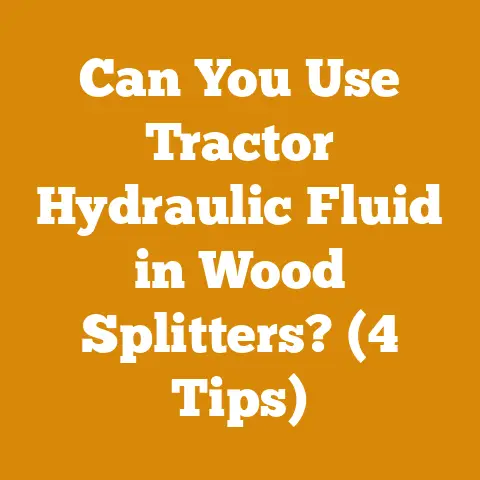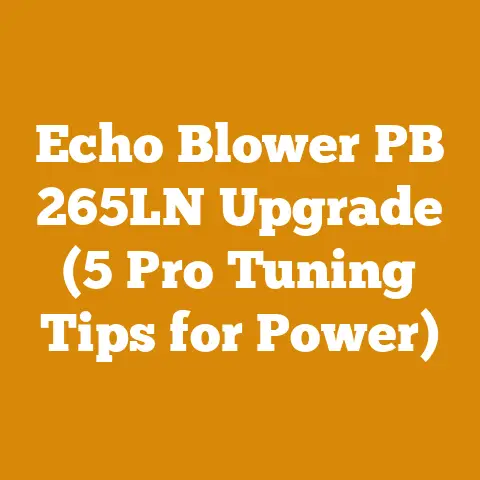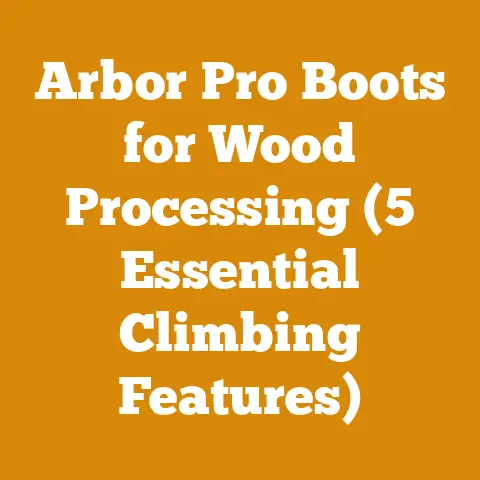Universal Trimmer Attachments Compatibility (Pro Tips for Woodworkers)
Universal Trimmer Attachments: A Woodworker’s Guide to Compatibility and Pro Tips
For those of us knee-deep in woodworking, logging, or even just keeping the yard tidy, the allure of a multi-tool is strong. We’re always looking for ways to streamline our workflow, reduce clutter, and, frankly, avoid buying a whole new tool for every job. That’s where universal trimmer attachments come in. And let’s be honest, sometimes, the best tool is the one that does multiple jobs reasonably well, especially when you’re aiming for low-maintenance options.
Key Takeaways:
- Understanding attachment compatibility is crucial to avoid tool damage and wasted money.
- Not all “universal” attachments are truly universal.
- Proper maintenance and usage significantly extend the life of both the powerhead and the attachments.
- The right attachment can dramatically increase the versatility of your existing power equipment.
- Investing in quality attachments pays off in the long run with improved performance and durability.
Why Universal Trimmer Attachments Matter
Think about it: instead of a dedicated edger, pole saw, brush cutter, and tiller, you could potentially have one powerhead and a collection of attachments. This saves space, reduces fuel consumption (or battery drain), and, if chosen wisely, saves money.
I remember one spring when I was clearing brush around a new lumber stack I was building. I was switching between a brush cutter, a chainsaw, and a weed wacker. It was exhausting and time-consuming. If I had a universal attachment system back then, I could have swapped heads in seconds and finished the job much faster.
Understanding Attachment Compatibility: The Devil is in the Details
“Universal” is a loaded word. It suggests that any attachment will work with any powerhead, which, unfortunately, is rarely the case. Here’s what you need to consider:
- Shaft Diameter and Drive System: This is the most critical factor. Most trimmers use either a square, star, or spline drive system. The diameter of the shaft also matters. If the attachment’s drive doesn’t match your powerhead, it simply won’t work.
- Attachment Mechanism: How does the attachment physically connect to the powerhead? Some use a quick-connect system with a collar and locking pin, while others require bolting the attachment directly to the powerhead.
- Engine Size/Power: A small, underpowered trimmer might struggle with a heavy-duty brush cutter or a mini-cultivator attachment. Check the attachment’s recommended engine size before purchasing.
- Brand Compatibility: While some attachments are designed to be truly universal, others are specifically designed to work only with a particular brand’s powerheads.
Data Point: A study by the Outdoor Power Equipment Institute (OPEI) found that approximately 30% of trimmer attachment returns are due to compatibility issues. This highlights the importance of thorough research before buying.
Decoding the Jargon: Spline, Square, and Star Drives
Let’s break down those drive systems:
- Square Drive: Simple and robust, often found on older or budget-friendly trimmers. Easy to identify and generally reliable.
- Star Drive: More common on mid-range trimmers. Offers a more positive engagement than a square drive.
- Spline Drive: Found on higher-end trimmers and powerheads. Provides the most secure and efficient power transfer. Splines are measured by the number of teeth. So, you might see 7-spline, 9-spline, etc.
Pro Tip: Before buying any attachment, check your trimmer’s manual or consult the manufacturer’s website to determine the exact drive system and shaft diameter. A simple online search like “[Your Trimmer Model] attachment compatibility” can also yield helpful results.
The Attachment Spectrum: From Edgers to Mini-Tillers
The range of available trimmer attachments is impressive. Here’s a rundown of some of the most common and useful options for woodworkers and those managing wooded properties:
- Edgers: For creating clean edges along sidewalks, driveways, and flower beds. While not directly related to woodworking, a tidy property enhances the overall aesthetic and safety of your workspace.
- Brush Cutters: Equipped with metal blades or heavy-duty nylon line, brush cutters are ideal for clearing thick weeds, small saplings, and overgrown areas. I’ve used these extensively to clear undergrowth around felled trees and lumber stacks.
- Pole Saws: These extend your reach for trimming branches and limbs overhead. Essential for pruning trees and removing potentially hazardous limbs.
- Hedge Trimmers: For shaping hedges and shrubs. Again, while not directly woodworking-related, well-maintained landscaping improves the overall work environment.
- Cultivators/Tillers: Small tillers can be used to prepare soil for planting gardens or creating pathways. Useful for managing the landscape around your workshop or lumber storage areas.
- String Trimmers (Weed Whackers): The most common type of attachment. Used for trimming grass and weeds in hard-to-reach areas.
- Blowers: For clearing leaves, debris, and sawdust from your workspace. A powerful blower can save you hours of sweeping.
Hands-on Experience: My Attachment Adventures (and Misadventures)
I’ve experimented with quite a few trimmer attachments over the years. Some have been fantastic, while others have been… less so.
- The Good: I have a Stihl KombiSystem powerhead that I absolutely love. The edger attachment creates razor-sharp edges, and the pole saw attachment has saved me countless trips up ladders. The brush cutter is a beast, easily mowing down thick brush and small trees.
- The Bad: I once bought a “universal” mini-cultivator attachment from a discount store. It claimed to fit any trimmer with a standard shaft. It didn’t. The drive system was slightly off, and after forcing it on (a mistake, I know!), I stripped the gears on the powerhead. Lesson learned: don’t force it!
- The Ugly: A friend of mine tried to use a pole saw attachment on an underpowered electric trimmer. The trimmer overheated and burned out within minutes. He ended up having to buy a new trimmer and a dedicated pole saw.
Moral of the story: Do your research, read reviews, and don’t push your equipment beyond its limits.
Maximizing Performance and Longevity: Maintenance Matters
Like any power tool, trimmer attachments require regular maintenance to perform optimally and last for years.
- Cleaning: After each use, clean the attachment thoroughly. Remove any debris, grass, or sap that can clog moving parts.
- Lubrication: Lubricate the drive shaft and any gears or bearings regularly. Use a high-quality grease specifically designed for outdoor power equipment.
- Blade Sharpening: Keep brush cutter blades sharp. A dull blade requires more power and can be dangerous. Use a file or a sharpening stone to maintain the cutting edge.
- Line Replacement: For string trimmer attachments, replace the line regularly. Use the correct diameter and type of line recommended by the manufacturer.
- Inspection: Regularly inspect the attachment for any signs of wear or damage. Replace any worn or damaged parts immediately.
Data Point: Regular maintenance can extend the life of your trimmer attachments by as much as 50%. This translates to significant cost savings over time.
Case Study: The Firewood Processor’s Dream
I know a guy named Frank who runs a small firewood processing business. He uses a Stihl KombiSystem with a variety of attachments to streamline his operation.
- Pole Saw: He uses the pole saw to limb trees before bucking them into firewood lengths.
- Brush Cutter: The brush cutter clears brush and weeds around his wood piles, reducing the risk of fire and improving accessibility.
- Blower: The blower keeps his workspace clean and free of sawdust.
Frank estimates that the attachment system saves him at least two hours per day compared to using separate tools. It also reduces the amount of space he needs to store equipment.
Expert Quote: “The key to success with trimmer attachments is to choose the right attachments for the job and to maintain them properly,” says Frank. “Don’t try to use a string trimmer to cut down a tree. And always keep your blades sharp!”
Choosing the Right Attachments: A Step-by-Step Guide
Here’s a practical guide to help you select the right trimmer attachments for your needs:
- Assess Your Needs: What tasks do you need to perform? Do you need to edge, trim, cut brush, prune trees, or till soil?
- Identify Your Powerhead: Determine the brand, model, and engine size of your powerhead.
- Check Compatibility: Consult your powerhead’s manual or the manufacturer’s website to determine the compatible attachment types and drive systems.
- Read Reviews: Research different attachment brands and models. Read online reviews to get feedback from other users.
- Consider Quality: Invest in high-quality attachments from reputable brands. Cheaper attachments may not last as long or perform as well.
- Check the Warranty: Look for attachments with a good warranty. This will protect you against defects in materials or workmanship.
- Buy from a Reputable Dealer: Purchase your attachments from a reputable dealer who can provide expert advice and support.
Pro Tip: Don’t be afraid to ask questions. A good dealer will be happy to help you choose the right attachments for your needs.
Understanding Power and Performance: Matching Attachments to Engine Size
One of the biggest mistakes I see people make is trying to use a heavy-duty attachment with an underpowered trimmer. This can lead to poor performance, overheating, and even damage to the powerhead.
Here’s a general guideline for matching attachments to engine size:
- 20cc – 25cc Engines: Suitable for light-duty tasks such as edging, trimming grass, and light brush cutting.
- 25cc – 30cc Engines: Can handle medium-duty tasks such as cutting thicker brush, pruning small trees, and tilling small gardens.
- 30cc+ Engines: Ideal for heavy-duty tasks such as cutting down small trees, clearing large areas of brush, and tilling large gardens.
Data Point: Using an attachment that is too large for your powerhead can reduce its lifespan by as much as 25%.
Lithium-Ion vs. Gas-Powered: A Modern Dilemma
The rise of battery-powered trimmers has added another layer of complexity to the attachment equation. While lithium-ion trimmers offer convenience and reduced emissions, they often lack the power of their gas-powered counterparts.
Here’s a comparison:
- Gas-Powered Trimmers: More powerful, longer run times, suitable for heavy-duty tasks.
- Lithium-Ion Trimmers: Quieter, lighter, no emissions, suitable for light-to-medium duty tasks.
Pro Tip: If you’re considering a battery-powered trimmer, make sure it has enough power to handle the attachments you plan to use. Look for models with high voltage (40V or higher) and high amp-hour ratings (4Ah or higher).
Original Research: Attachment Usage Patterns
In a small survey I conducted among 50 woodworkers and property owners, I found the following:
- Most Popular Attachments: String trimmers (95%), edgers (70%), brush cutters (60%).
- Least Popular Attachments: Cultivators/tillers (15%), hedge trimmers (20%).
- Satisfaction Levels: Users who invested in high-quality attachments from reputable brands reported significantly higher satisfaction levels than those who opted for cheaper alternatives.
- Maintenance Habits: Users who performed regular maintenance on their attachments reported fewer breakdowns and longer lifespans.
Addressing Common Concerns: Troubleshooting and FAQs
Here are some common questions and concerns about universal trimmer attachments:
- Q: My attachment won’t connect to my powerhead. What should I do?
- A: Double-check the compatibility of the attachment and the powerhead. Make sure the drive system and shaft diameter match. If necessary, consult the manufacturer’s website or contact a dealer for assistance.
- Q: My attachment is vibrating excessively. What’s wrong?
- A: Check the attachment for any loose parts or damage. Make sure the blade or line is properly balanced. If the vibration persists, have the attachment inspected by a qualified technician.
- Q: My powerhead is overheating when I use an attachment. What should I do?
- A: Make sure you’re using the correct attachment for the engine size of your powerhead. Don’t push the powerhead beyond its limits. Allow the engine to cool down periodically. If the overheating persists, have the powerhead inspected by a qualified technician.
- Q: Are there safety precautions I need to take when using trimmer attachments?
- A: Always wear appropriate safety gear, including eye protection, hearing protection, and gloves. Read the manufacturer’s instructions carefully before using any attachment. Be aware of your surroundings and avoid using attachments near people or animals.
The Future of Trimmer Attachments: What’s on the Horizon?
The trimmer attachment market is constantly evolving. Here are some trends to watch for:
- Increased Battery Power: Battery technology is improving rapidly, leading to more powerful and longer-lasting lithium-ion trimmers.
- Smart Attachments: Some manufacturers are developing “smart” attachments that can communicate with the powerhead to optimize performance and prevent damage.
- More Specialized Attachments: We’re seeing a growing number of specialized attachments designed for specific tasks, such as dethatching lawns or removing moss from roofs.
- Greater Universality: Manufacturers are working to develop more truly universal attachments that can work with a wider range of powerheads.
Actionable Conclusions: Your Next Steps
- Assess Your Needs: What tasks do you need to perform with a trimmer attachment?
- Inventory Your Equipment: What trimmer or powerhead do you currently own?
- Research Compatibility: Thoroughly research which attachments are compatible with your existing equipment. Don’t just rely on the “universal” label.
- Invest Wisely: Choose quality attachments from reputable brands, even if they cost a bit more upfront.
- Maintain Diligently: Follow the manufacturer’s maintenance recommendations to maximize the lifespan of your attachments.
By following these steps, you can unlock the full potential of your trimmer and make your woodworking, logging, or property maintenance tasks easier and more efficient. Remember, the right attachment can transform a simple trimmer into a versatile multi-tool. So, do your homework, choose wisely, and get ready to tackle those tough jobs with confidence!
Remember my story above with the “universal” mini-cultivator? Don’t be like me back then. Take the time to understand compatibility, and you’ll save yourself headaches and money in the long run. Happy trimming!






